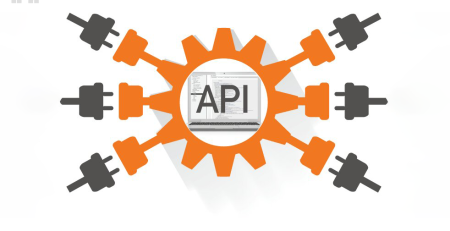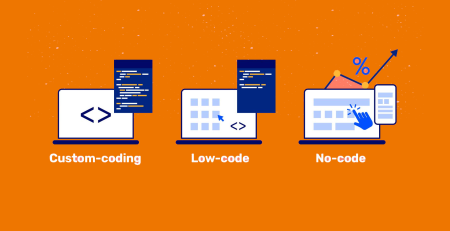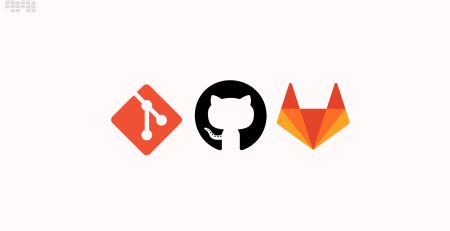15 Tips For Writing Good User Stories
A fundamental skill for agile and software development teams is the creation of strong user stories. User stories act as a conduit between the development team and the end users or customers, assisting in the brief and unambiguous expression of what needs to be produced. User stories have the potential to significantly improve project productivity, communication, and teamwork when used properly.
In this essay, we’ll examine 15 crucial pointers for crafting effective user stories. These guidelines will assist you in developing user stories that are efficient, implementable, and in line with the requirements of your users and stakeholders, whether you’re a product owner, business analyst, developer, or tester.
So, let’s get started on the journey to mastering the art of writing user stories that contribute to the success of your agile projects.
1.Know Your Users
The foundation for writing user stories that actually resonate and give value is understanding your users. Prior to getting into the details of any development project, it’s critical to have a thorough understanding of the people who will ultimately engage with your product. Your ability to build user stories that are not only technically solid but also very pertinent and user-centric is enhanced by this expertise.
By spending the effort to “know your users,” you unlock a wealth of advantages. Discovering their particular requirements, preferences, and pain spots enables you to create user stories that specifically address these issues. As a result, there is a better chance that development teams and end users will work together to create products that meet or exceed consumer expectations.
Incorporating user personas, conducting user interviews, and analyzing user data are some of the techniques that can help you gain a deeper understanding of your users. When armed with this knowledge, you can create user stories that not only guide development but also resonate with the people who matter most – your users.
2.Start with the End Goal
Starting with the end goal in your user story is a fundamental practice in agile development that helps ensure your development efforts remain aligned with the overarching objectives of your project. By clearly defining the desired outcome or value that a user should derive from a user story, you provide a roadmap for your team to follow and prioritize tasks effectively. This approach enhances communication, minimizes scope creep, and ultimately results in more successful and user-centric software development.
When you initiate a user story with the end goal in mind, you establish a clear direction for your team. It answers the crucial “why” behind a particular feature or functionality, ensuring that it serves a purpose and contributes to the overall value of your product. This practice also helps in making informed decisions about the scope of the story and its priority within the backlog. In essence, starting with the end goal transforms user stories from mere technical tasks into strategic tools that drive your project toward success.
To implement this approach effectively, it’s essential to collaborate closely with stakeholders to define and prioritize the end goals of your user stories. Additionally, regularly revisiting and refining these goals as your project evolves ensures that your user stories remain relevant and aligned with the changing needs of your users and business objectives. By integrating this practice into your agile workflow, you empower your team to deliver value-driven software that resonates with your users.
3.Use Clear and Simple Language
In the world of agile development, communication is everything, and the language you use in your user stories can make or break a project. This blog post dives deep into the importance of using clear and simple language when crafting user stories. We explore how straightforward and accessible language can bridge the gap between technical teams and stakeholders, fostering better understanding and collaboration.
By using plain language in your user stories, you ensure that everyone involved in the project, from developers to product owners and end-users, can easily comprehend the story’s intent and purpose. We provide practical tips and real-world examples to help you steer clear of technical jargon and complex terminology, making your user stories universally understandable. When you prioritize clarity, you empower your team to work cohesively, reduce misunderstandings, and create software that truly meets user needs and expectations.
4.Follow the “As a [User], I Want [Goal] So That [Benefit]” Format
1. “As a [User]”: This part of the format identifies who the user or persona is. It specifies the role or category of the person who will benefit from the user story. It’s important because it provides context about whose needs or goals the story is addressing. For example, “As a customer,” “As an admin,” or “As a first-time visitor.”
2. “I Want [Goal]”: This section outlines the specific goal or objective that the user is trying to achieve. It describes what the user wants to accomplish when interacting with your software or product. This part of the format is the core of the user story, defining the functionality or feature being requested. For example, “I want to search for products,” “I want to update my password,” or “I want to add items to my shopping cart.”
3. “So That [Benefit]”: The final part of the format explains the benefit or value that the user expects to gain from achieving the specified goal. It clarifies why the user wants to accomplish the task described in the story. This benefit can be a tangible advantage, such as saving time, increasing efficiency, or improving the user experience. For example, “So that I can quickly find the items I need,” “So that my account remains secure,” or “So that I can easily track my purchases.”
By following this format, you create user stories that are not just technical requirements but narratives that provide context, purpose, and user-centered focus. It helps ensure that your development team understands not only what needs to be built but also why it’s essential from the user’s perspective. This format enhances communication, promotes empathy for the user, and contributes to delivering software that truly meets user needs and expectations.
5.Prioritize Stories
Prioritizing user stories is a crucial practice in agile development that ensures that the most valuable and impactful features are addressed first. By focusing on prioritization, you streamline your development process, allocate resources efficiently, and deliver value to users and stakeholders more effectively. In this blog post, we explore the significance of prioritizing user stories and provide practical strategies and techniques for determining the order in which stories should be tackled. Whether you use methods like MoSCoW (Must-have, Should-have, Could-have, Won’t have) or Value vs. Effort, this post will guide you in making informed decisions about which stories should take precedence in your backlog. Prioritization is the compass that keeps your agile projects on track, ensuring that you’re delivering the most valuable features and improvements to your users and stakeholders.
6.Keep Stories Small
Keeping user stories small is a best practice in agile software development that involves breaking down complex requirements or features into smaller, more manageable parts. Here’s an explanation of why keeping stories small is important and how it works:
Why Keep Stories Small:
- Improved Estimation: Smaller stories are easier to estimate in terms of time and effort. Team members can more accurately gauge how long it will take to complete a small story, leading to more reliable sprint planning and delivery predictions.
- Enhanced Focus: Small stories have a clear and specific scope, allowing teams to focus on delivering one piece of functionality at a time. This minimizes distractions and helps prevent scope creep.
- Better Collaboration: Smaller stories are easier to understand and discuss among team members, stakeholders, and product owners. This leads to improved collaboration and ensures that everyone is on the same page regarding the story’s requirements.
- Reduced Risk: Smaller stories reduce the risk associated with large, complex features. If a small story encounters issues or requires adjustments, it’s easier to address without derailing the entire project.
- Faster Feedback: Smaller stories allow for quicker feedback from users and stakeholders. Teams can release incremental improvements more frequently, gather feedback, and make adjustments as needed, leading to a more user-centric product.
How to Keep Stories Small:
- Decompose Features: Break down large features or epics into smaller, logically independent parts. Each small story should deliver a specific piece of functionality or value.
- Focus on User Needs: Ensure that each small story addresses a distinct user need or goal. Avoid combining multiple user needs into a single, larger story.
- Use the INVEST Criteria: Apply the INVEST principles (Independent, Negotiable, Valuable, Estimable, Small, and Testable) to evaluate and refine your user stories.
- Leverage Acceptance Criteria: Clearly define acceptance criteria for each story to outline the conditions that must be met for it to be considered complete.
- Prioritize Smaller Stories: When prioritizing stories in your backlog, consider the smallest, most valuable ones first to deliver quick wins and maximize user satisfaction.
By keeping user stories small, agile teams can work more efficiently, reduce risks, and adapt to changing requirements with greater ease. This approach promotes a user-focused, incremental, and iterative development process, ultimately leading to the successful delivery of valuable software.
7.Include Acceptance Criteria
Including acceptance criteria in user stories is a critical practice in agile development that helps ensure clarity, define the boundaries of a user story, and align the development team with stakeholder expectations. Here’s an explanation of why including acceptance criteria is important and how it works:
Why Include Acceptance Criteria:
- Clarity and Shared Understanding: Acceptance criteria provide explicit details about what needs to be accomplished to consider a user story complete. They eliminate ambiguity and ensure that both the development team and stakeholders have a shared understanding of the story’s requirements.
- Scope Definition: Acceptance criteria help define the scope of a user story by outlining specific conditions that must be met. This prevents scope creep and keeps the story focused on its intended goals.
- Objective Evaluation: Acceptance criteria serve as objective criteria for evaluating whether a user story has been successfully implemented. This ensures that the story meets the desired standards and functionality.
- Effective Testing: Well-defined acceptance criteria enable testers to create test cases that thoroughly evaluate the story. This improves the quality of testing and helps identify issues early in the development process.
How to Include Acceptance Criteria:
- Be Specific: Ensure that acceptance criteria are specific, clear, and unambiguous. Use concrete language to describe what should happen.
- Use Actionable Language: Describe actions or behaviors that can be tested. Avoid vague terms like “user-friendly” and focus on measurable actions.
- Consider All Scenarios: Include positive and negative scenarios to cover different use cases and potential edge cases.
- Keep Them Concise: Acceptance criteria should be concise and to the point. Avoid excessive details that may lead to confusion.
- Make Them Testable: Each acceptance criterion should be testable, meaning it can be validated through testing or inspection.
- Prioritize by Importance: If you have multiple acceptance criteria, consider indicating which ones are most critical or must be satisfied first.
By including acceptance criteria in your user stories, you provide a clear roadmap for development and testing. This ensures that everyone involved in the project understands what needs to be achieved and can objectively assess when the user story is complete. Ultimately, well-crafted acceptance criteria contribute to a smoother development process, higher-quality software, and greater alignment with stakeholder expectations.
8.Avoid Technical Jargon
Avoiding technical jargon in user stories is a practice that focuses on using plain and accessible language to ensure that all team members, stakeholders, and end-users can understand the content of the stories. Here’s an explanation of why avoiding technical jargon is important and how it works:
Why Avoid Technical Jargon:
- Improved Communication: Using plain language reduces the risk of miscommunication. It ensures that everyone involved in the project, regardless of their technical background, can easily grasp the intent and requirements of a user story.
- Inclusivity: Not all team members or stakeholders may be familiar with technical terminology. Avoiding jargon ensures that no one is excluded from meaningful discussions or decision-making processes.
- Clarity and Transparency: Plain language fosters transparency and clarity in user stories. It leaves no room for interpretation or confusion, making it easier for everyone to align their understanding of the story.
- Reduced Assumptions: Avoiding jargon encourages team members to be explicit about their requirements and expectations, reducing the likelihood of making assumptions about what others understand.
How to Avoid Technical Jargon:
- Define Terms: If technical terms must be used, provide clear and concise definitions within the user story or in a glossary.
- Use Analogies: When explaining complex concepts, consider using analogies or real-world examples that are familiar to a broader audience.
- Ask for Clarification: Encourage team members to ask questions if they encounter unfamiliar terms or concepts in a user story.
- Review for Clarity: Before finalizing user stories, review them with the team to ensure that they are free from technical jargon and understandable to all.
- Consider the Audience: Keep in mind the various audiences who will read the user stories, from developers to non-technical stakeholders, and tailor the language accordingly.
Avoiding technical jargon helps your team and stakeholders communicate clearly and effectively. By ensuring that all project participants are on the same page, this technique promotes more fruitful discussions, improved teamwork, and user stories that are understandable and relatable to a wider audience. In the end, it helps create software that successfully satisfies customer requirements and expectations.
9.Negotiate Details
Negotiating details in user stories is a collaborative process in agile development where team members, including developers, product owners, and stakeholders, refine and shape the user story’s scope and requirements. Here’s an explanation of why negotiating details is important and how it works:
Why Negotiate Details:
- Refinement: User stories often start with high-level descriptions. Through negotiation, team members work together to add details and clarity to the story, making it more actionable and understandable.
- Alignment: Negotiation ensures that everyone involved in the project has a shared understanding of the story’s goals and requirements. It helps align expectations and prevents misunderstandings.
- Flexibility: Agile development values responding to change. Negotiating details allows the team to adapt the user story as new information becomes available or as the project progresses.
How to Negotiate Details:
- Collaborative Discussions: Hold discussions or meetings, such as backlog grooming or sprint planning sessions, where team members can openly discuss and negotiate the user story.
- Prioritization: Prioritize the most critical aspects of the user story and focus on detailing those first. Less critical details can be negotiated later or as needed.
- Acceptance Criteria: Define clear acceptance criteria during negotiation. These criteria outline the specific conditions that must be met for the user story to be considered complete.
- Iterative Process: Negotiation is often an iterative process. As the project progresses and more information becomes available, the user story may need to be revisited and refined.
- Balance Clarity and Flexibility: Strive for a balance between providing enough detail to guide development and leaving room for flexibility to adapt to changing requirements.
- Involve Stakeholders: Ensure that relevant stakeholders are part of the negotiation process to gather their input and validate that the story aligns with their expectations.
By negotiating details, agile teams ensure that user stories are well-defined, actionable, and adaptable. It promotes better collaboration, reduces the risk of miscommunication, and ultimately leads to the successful development of software that meets user needs and stakeholder expectations.
10.Write Independent Stories
Writing independent stories in agile development means creating user stories that do not have strong dependencies on other stories or components. Here’s an explanation of why independent stories are important and how they work:
Why Write Independent Stories:
- Parallel Development: Independent stories can be worked on concurrently by different team members or teams. This parallel development accelerates project progress and shortens delivery times.
- Reduced Bottlenecks: Stories with dependencies can create bottlenecks in development when one story must be completed before another can begin. Independent stories minimize these bottlenecks.
- Increased Flexibility: Independent stories provide flexibility. If priorities change or a story encounters unexpected issues, it can be addressed without disrupting other parts of the project.
How to Write Independent Stories:
- Decompose Features: Break down large features or epics into smaller, self-contained stories. Each story should deliver a specific piece of functionality or value.
- Minimize Cross-Story Dependencies: Avoid creating stories that rely heavily on the completion of other stories. Instead, aim to make each story as self-sufficient as possible.
- Prioritize Independence: When prioritizing stories in your backlog, consider how independent they are. Stories that can be developed without waiting for others should be given preference.
- Use Interface Agreements: If some level of dependency is unavoidable, establish clear interface agreements between stories to ensure compatibility and reduce friction during development.
- Test for Independence: During backlog grooming or sprint planning, assess each story for potential dependencies and work with the team to identify and address them.
Writing independent stories is key to maintaining a flexible and efficient agile development process. It allows teams to work in parallel, respond to changing priorities, and adapt to evolving requirements more effectively. Independent stories contribute to smoother project execution and faster delivery of value to users and stakeholders.
11.Use Personas
Using personas in user stories is a technique in agile development that involves creating fictional but representative characters to better understand and empathize with end-users. Here’s an explanation of why using personas is important and how it works:
Why Use Personas:
- Humanizing Users: Personas humanize users by giving them names, faces, and characteristics. This helps the development team relate to and empathize with the people who will use the software.
- Understanding Needs: Personas provide a clear understanding of the needs, goals, and pain points of different user groups. This enables the team to prioritize features and functionality that align with these user needs.
- Focusing on User-Centric Design: Personas shift the focus from technical requirements to user-centric design. They remind the team that software development is ultimately about solving real problems for real people.
How to Use Personas:
- Create Personas: Develop personas by conducting research and gathering information about your target users. Each persona should represent a distinct user group with unique characteristics and needs.
- Include Personas in User Stories: When writing user stories, refer to personas to provide context and clarity. For example, “As a [Persona], I want [Goal] so that [Benefit].”
- Prioritize Features: Use personas to prioritize features and functionality based on the needs and goals of different user groups. This ensures that the most valuable aspects of the software are addressed first.
- Empathize and Test: Encourage team members to empathize with personas throughout development. During testing, consider how well the software meets the needs of each persona and make adjustments as necessary.
- Iterate and Refine: As you gather feedback and learn more about your users, iterate and refine your personas to ensure they accurately represent the evolving user landscape.
Agile teams may maintain user-centeredness and develop software that connects with actual users by leveraging personas. Through the whole development process, it encourages a user-centric approach, producing products that are more likely to satisfy user wants and expectations. Personas also assist in priority, design, and functionality decisions, which ultimately contribute to the project’s success.
12.Keep Stories Testable
Keeping user stories testable is a fundamental practice in agile software development that involves ensuring that each user story can be effectively tested to determine if it meets its acceptance criteria and user requirements. Here’s an explanation of why keeping stories testable is important and how it works:
Why Keep Stories Testable:
- Quality Assurance: Testable user stories are crucial for quality assurance. They provide a clear path for testing, verification, and validation of the software’s functionality.
- Objective Evaluation: Testable stories allow for objective evaluation of whether a feature or functionality meets its intended requirements and delivers the expected value.
- Early Issue Identification: Testable stories facilitate early identification of issues or defects in the software, allowing for timely resolution and preventing problems from escalating.
How to Keep Stories Testable:
- Define Clear Acceptance Criteria: Clearly define the conditions that must be met for a user story to be considered complete. These acceptance criteria serve as the basis for testing.
- Avoid Ambiguity: Ensure that the language used in the user story and acceptance criteria is unambiguous and leaves no room for interpretation. Ambiguity can lead to misunderstandings during testing.
- Use Measurable Metrics: Incorporate measurable metrics or criteria into the acceptance criteria. This makes it easier to assess whether the story’s requirements have been met.
- Include Test Cases: Collaborate with your testing team to develop test cases based on the acceptance criteria. These test cases should guide the testing process and ensure comprehensive coverage.
- Involve Testers Early: Involve testers in the discussion and refinement of user stories from the beginning. Their insights can help identify potential testing challenges and ensure that stories are testable.
- Iterate and Update: As the project progresses, revisit and update acceptance criteria and test cases to reflect changes in requirements or project scope.
For the purpose of upholding software quality and guaranteeing that user demands are satisfied, stories must always be testable. It encourages cooperation between programmers and testers and aids in the early detection of problems, which makes it simpler to fix them before they become expensive or disruptive. Successful agile development relies on testable user stories to enable teams to produce dependable, high-quality software.
13.Review and Refine
The process of reviewing and refining user stories is a critical and ongoing aspect of agile development that ensures that user stories are continually improved, clarified, and aligned with project goals and user needs. Here’s an explanation of why reviewing and refining user stories is important and how it works:
Why Review and Refine User Stories:
- Continuous Improvement: The initial version of a user story may lack clarity or could be improved. Regular review and refinement allow the team to identify and address issues or ambiguities in the stories, leading to better outcomes.
- Changing Requirements: Agile projects are often subject to changing requirements and priorities. Reviewing and refining stories enables the team to adapt to these changes and ensure that stories remain relevant.
- Alignment: User stories should always align with the current objectives and goals of the project. Regular review helps ensure that the stories support the project’s evolving needs.
How to Review and Refine User Stories:
- Regular Meetings: Schedule regular meetings, such as backlog grooming sessions or sprint planning meetings, where the team collectively reviews and refines user stories.
- Clarify Ambiguities: Identify any ambiguities, inconsistencies, or gaps in the user stories and work collaboratively to clarify them.
- Add Detail: If a story lacks sufficient detail, collaborate to add the necessary information, such as acceptance criteria or technical considerations.
- Prioritize Refinements: Prioritize refinements based on their impact on the project. Stories that are near the top of the backlog or slated for the next sprint may require more immediate attention.
- Update Acceptance Criteria: Ensure that acceptance criteria are up to date and comprehensive, reflecting the latest understanding of the story’s requirements.
- Involve Stakeholders: When appropriate, involve stakeholders in the review and refinement process to gather their input and validate that the stories align with their expectations.
- Document Changes: Document any changes or refinements made to user stories to maintain a clear record of the story’s evolution.
By regularly reviewing and refining user stories, agile teams ensure that their work remains aligned with project objectives and user needs. It fosters collaboration, reduces misunderstandings, and leads to software that better meets user expectations. This ongoing process is a cornerstone of agile development, contributing to the delivery of high-quality software that evolves with the project’s dynamics.
14.Avoid “And” or “Or” Conditions
Avoiding “and” or “or” conditions in user stories is a best practice in agile development that aims to keep user stories focused and maintain their simplicity and clarity. Here’s an explanation of why avoiding “and” or “or” conditions is important and how it works:
Why Avoid “And” or “Or” Conditions:
- Simplicity: User stories should be concise and focused on a single piece of functionality. When you introduce “and” or “or” conditions, it can make the story complex and challenging to understand.
- Clear Acceptance Criteria: “And” or “or” conditions can lead to ambiguity in acceptance criteria, making it difficult to determine when the story is complete. Clear acceptance criteria are crucial for effective testing and validation.
- Scope Control: By avoiding “and” or “or” conditions, you can better control the scope of the story, ensuring that it remains manageable and aligned with the user’s needs.
How to Avoid “And” or “Or” Conditions:
- Decompose Stories: If a story contains multiple conditions connected by “and” or “or,” consider breaking it down into smaller, more focused stories, each addressing a single condition.
- Prioritize: Determine which conditions are the most critical and should be addressed first. This helps in prioritizing stories effectively.
- Use Clear Language: Ensure that the language used in the user story and acceptance criteria is unambiguous and does not introduce complex conditions.
- Collaborate: Engage the development team, product owner, and stakeholders in discussions to clarify the story’s requirements and identify any conditions that can be simplified or separated.
- Write Independent Stories: Aim to create user stories that are independent of each other, reducing the need for “and” or “or” conditions to link them.
By avoiding “and” or “or” conditions in user stories, you maintain their clarity and focus, making it easier for the team to understand, estimate, and implement the functionality described. This practice promotes a more streamlined and efficient development process, ultimately leading to the successful delivery of software that meets user needs and expectations.
15.Stay Agile
Staying agile in software development means embracing the core principles of agility, which include flexibility, collaboration, and a focus on delivering value to the customer. Here’s an explanation of why staying agile is important and how it works:
Why Stay Agile:
- Adapting to Change: Software development is inherently dynamic, with changing requirements, technologies, and user needs. Staying agile allows teams to adapt to these changes efficiently.
- Customer-Centric: Agility places a strong emphasis on delivering value to the customer early and frequently. It ensures that the software aligns with the evolving needs of the users.
- Efficiency and Collaboration: Agile methodologies promote efficient teamwork and collaboration among cross-functional teams, leading to faster development cycles and improved product quality.
How to Stay Agile:
- Embrace Iteration: Agile development relies on iterative processes. Work in short cycles (sprints in Scrum) and continuously review, refine, and adapt your plans and work.
- Prioritize Customer Feedback: Gather feedback from users and stakeholders regularly. Use this feedback to inform your development priorities and make necessary adjustments.
- Collaborative Teams: Foster a culture of collaboration among team members, including developers, testers, product owners, and designers. Encourage open communication and transparency.
- Continuous Improvement: Reflect on your processes and outcomes. Identify areas for improvement and implement changes to enhance efficiency and quality.
- Flexible Planning: Be prepared to adjust your plans based on new information or changing priorities. Agile methodologies like Scrum provide mechanisms for adaptive planning.
- Focus on Value: Always prioritize features and functionality that provide the most value to users. Continuously assess whether the work being done aligns with this principle.
- Cross-Functional Teams: Create teams with diverse skills and expertise to ensure that all aspects of development, from coding to testing to design, are addressed within the team.
Staying agile is not just about following a specific methodology but rather adopting a mindset of adaptability, customer focus, and collaboration. It enables software development teams to navigate the complexities of their projects, respond to change effectively, and consistently deliver valuable and high-quality software to their users and stakeholders.
Conclusion
In the world of agile development, the art of crafting good user stories is paramount to the success of projects. These 15 tips serve as a comprehensive guide to help teams navigate the complexities of user story writing effectively. From understanding the user’s perspective and maintaining clarity in language to embracing adaptability and simplicity, these principles provide a roadmap for creating user stories that are not only actionable but also aligned with user needs and business objectives.
In conclusion, the journey of mastering user story writing is an ongoing one. It requires a commitment to continuous improvement, collaboration, and a deep understanding of user-centric principles. By following these 15 tips, agile teams can enhance their communication, streamline their development processes, and ultimately deliver software that delights users and stakeholders alike. As the agile landscape evolves, staying agile in your approach to user stories will be the key to staying ahead in the ever-changing world of software development.













Leave a Reply